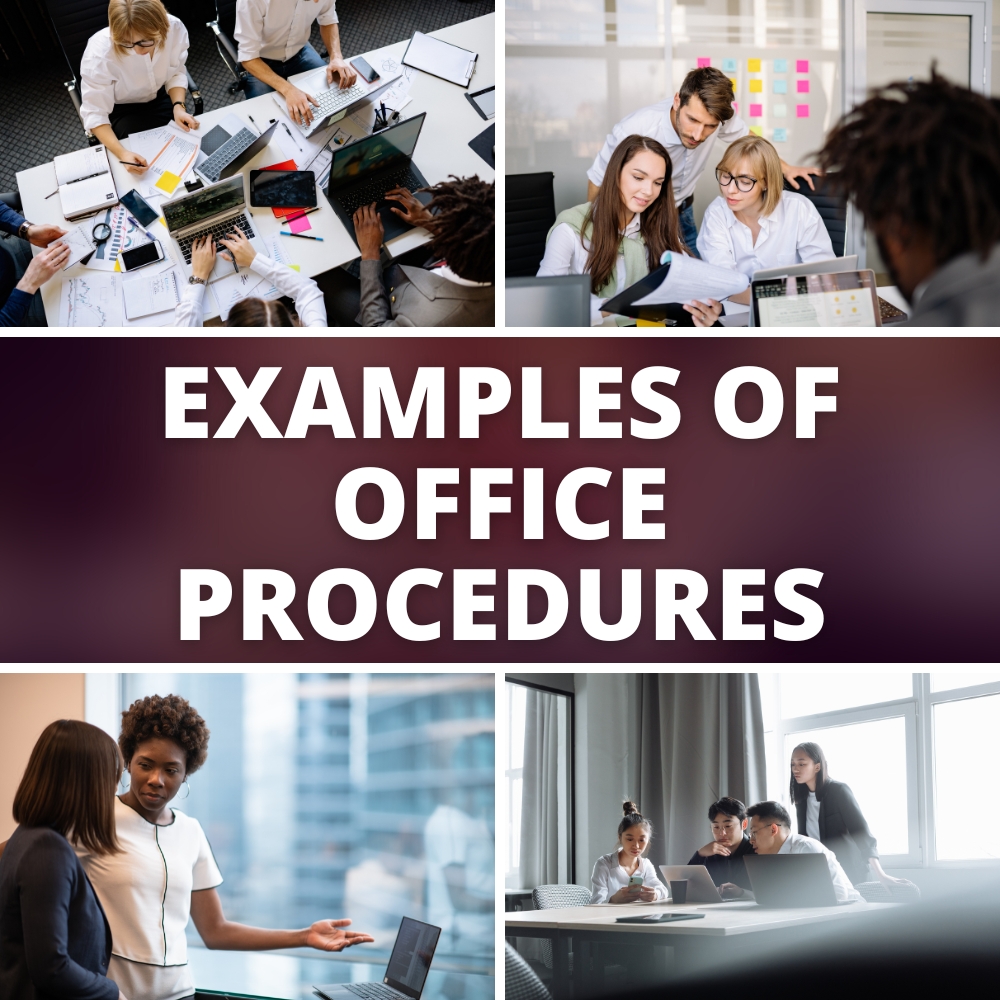50 Examples of Office Procedures
These examples of office procedures provide the framework that governs a workplace, from the front-desk reception to the underlying record keeping systems and business processes. Establishing an effective set of procedures plays a key role in fostering an organized and efficient working environment.

A comprehensive review of these procedures can also help identify areas for improvement, streamlining tasks and saving both time and money. Here are 50 examples of office procedures to consider for your workplace.
Examples of office procedures
- 1. Establish a health and safety policy
- 2. Create a document retention policy
- 3. Track attendance and require approval for time off requests
- 4. Review customer service protocols
- 5. Train employees on customer service protocols
- 6. Create a dress code
- 7. Review customer privacy policies
- 8. Create protocols to handle customer complaints and grievances
- 9. Set up a procedure for handling inventory
- 10. Define the procedure for product returns
- 11. Define how complaints are escalated
- 12. Define protocols for office visitors
- 13. Set up guidelines for equipment use
- 14. Define standards for data collection and storage
- 15. Create protocols for back-up data storage
- 16. Establish a records management plan
- 17. Create policy for disposal of outdated electronic equipment
- 18. Create a protocol for work orders
- 19. Establish a procedure for dealing with lost property
- 20. Set up a disciplinary system
- 21. Establish a procedure for staff appraisals
- 22. Create a document control procedure
- 23. Establish a procedure for handling cash
- 24. Create security protocols for physical access to buildings
- 25. Set up password guidelines
- 26. Define a procedure for handling confidential information
- 27. Review procedures for office safety and security
- 28. Set up guidelines for the use of professional language
- 29. Define the access and use rules for each type of documents
- 30. Establish a travel plan
- 31. Train employees on conscious use of work resources
- 32. Create a procedure for conducting meetings
- 33. Establish a system for handling incoming and outgoing mail
- 34. Establish a procedure for dealing with the press
- 35. Establish a database security procedure
- 36. Establish protocols for deletion of electronic data
- 37. Create procedures for delegating tasks amongst department/staff
- 38. Establish protocols for verifying sources of information
- 39. Train employees on computer and internet safety guidelines
- 40. Train employees on general office etiquette
- 41. Create protocols for team building and morale
- 42. Create procedures for handling performance reviews
- 43. Set up criteria for hiring and recruitment
- 44. Create a system for handling contracts
- 45. Establish regulations related to company vehicles
- 46. Train employees on the principles of safety
- 47. Develop procedures concerning office access and security
- 48. Develop a plan to ensure regulatory and legal compliance
- 49. Create protocols for archiving records
- 50. Train employees on the principles of customer service
Having a comprehensive set of procedures in place can help foster an organized and efficient work environment. Establishing clear procedures for everything from customer complaints to data storage to team building helps ensure that guidelines are followed, tasks are accomplished efficiently and the risk of costly errors is reduced. From the front-desk reception to records management and business processes, following the procedures outlined above is the key to fostering a successful, productive workplace.